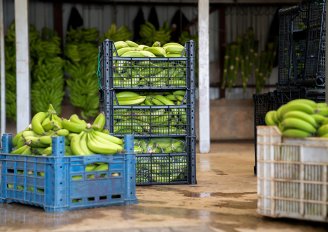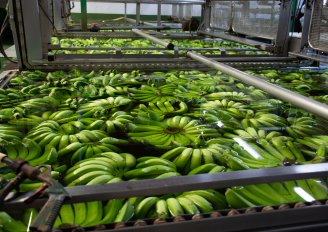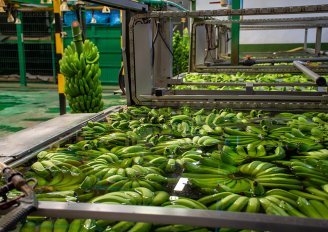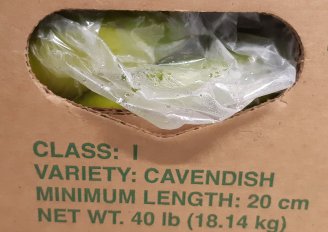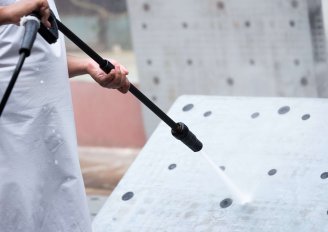
Packhouse practices for bananas
Packhouse practices include the activities from the moment the products arrive at the collection station or packhouse to the moment of transport to the intended market. Dividing the bunch into smaller units, washing, sorting and packing are among the main activities. Good packaging is a requirement to maintain a good quality of banana throughout the rest of the supply chain. This also applies to good temperature management. Furthermore, proper cleaning and sanitizing of building and equipment is part of good packhouse practices.
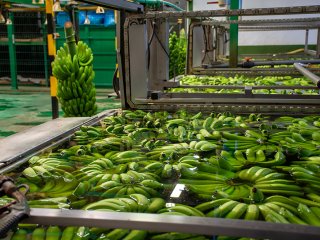
Well regulated and controlled processes
The activities at the packhouse must be well regulated and controlled. The process of washing, cutting, grading and packing is always well supervised. The skin is vulnerable to damages. Always handle bananas carefully. Packing in cardboard boxes with bags is done in such a way that it provides a high humidity and a good protection against abrasion damage during transport. Bananas should be rapidly cooled after harvest. However, bananas should not be stored below their critical temperature, as chilling injury may then occur which would result in risks on discolorations of skin, poor flavour and increased susceptibility to decay.
